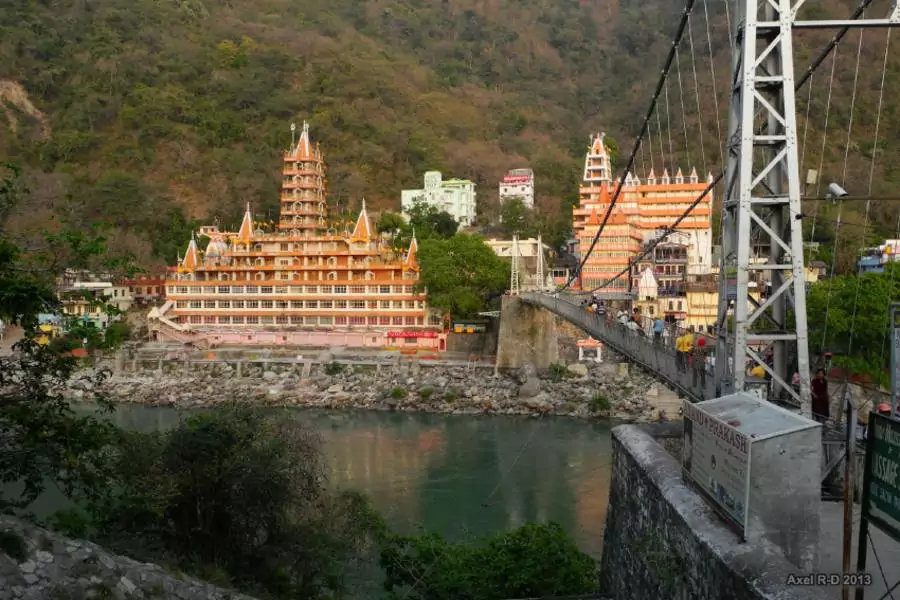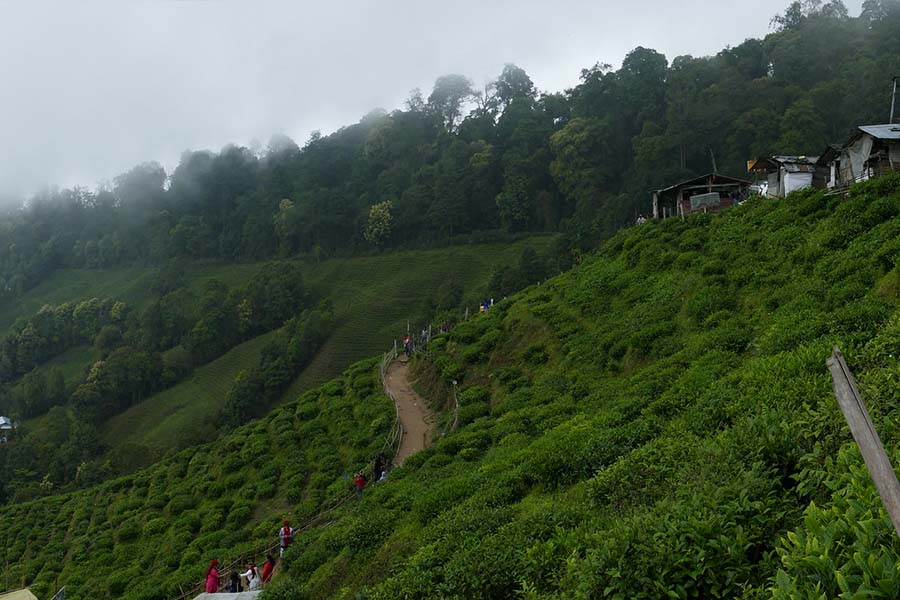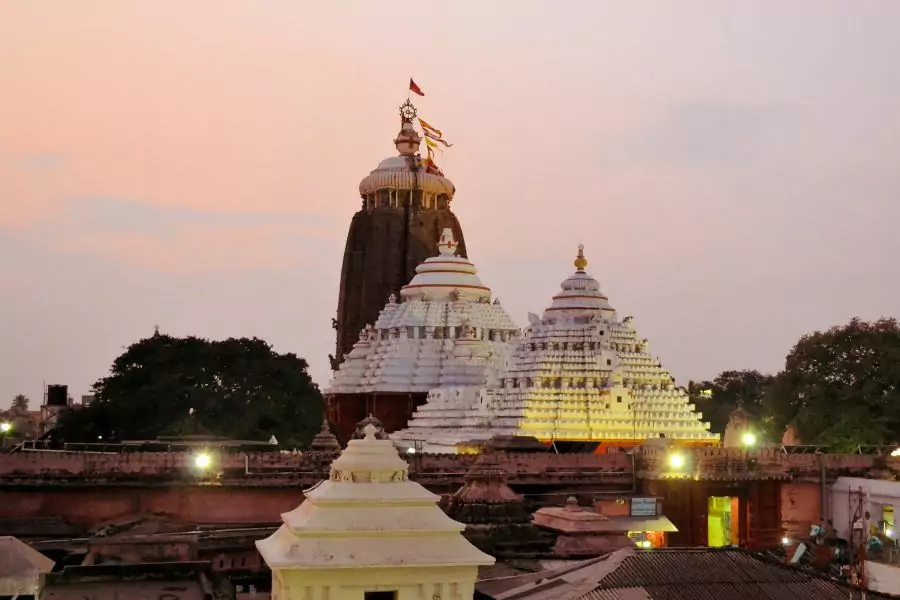Rishikesh Temple Tour – Top Temples to Visit, How to Reach

Rishikesh Temple: Rishikesh, situated along the serene banks of the Ganges River, is not just a sanctuary for yoga enthusiasts but also a treasure trove of spiritual heritage. This guide will take you on a comprehensive tour of the most significant temples in Rishikesh, showcasing their historical importance, architectural marvels, and the spiritual experiences they offer. Whether you seek spiritual enlightenment or a deeper connection to India’s rich cultural heritage, the temples of Rishikesh promise a unique and fulfilling journey.
Introduction to Rishikesh
Rishikesh, often called the “Yoga Capital of the World,” lies in the northern state of Uttarakhand, India. This picturesque town, framed by the lush hills of the Himalayas and cradled by the sacred Ganges River, is a major pilgrimage site. Known for its spiritual energy, Rishikesh attracts thousands of visitors each year who come to immerse themselves in its divine atmosphere and explore its numerous temples.
Why Visit Temples in Rishikesh?
The temples of Rishikesh offer more than just a place of worship; they are gateways to understanding ancient Hindu traditions and practices. Each temple holds a significant place in Hindu mythology and history, offering visitors a chance to engage in spiritual rituals and witness architectural brilliance. Exploring these temples allows travelers to experience the profound serenity that defines Rishikesh.
Top Temples to Visit in Rishikesh
Parmarth Niketan

Parmarth Niketan is one of Rishikesh’s largest and most renowned ashrams. Founded by Pujya Swami Shukdevanandji Maharaj, this ashram is a spiritual haven for seekers from around the world. The ashram is celebrated for its Ganga Aarti, which is performed every evening, attracting numerous visitors who gather to witness this mesmerizing ritual. Additionally, Parmarth Niketan offers yoga classes, meditation sessions, and spiritual discourses.
- Location: Swarg Ashram, Rishikesh
- Highlights: Evening Ganga Aarti, Yoga and meditation classes, Cultural programs
Trimbakeshwar Temple

Dedicated to Lord Shiva, Trimbakeshwar Temple stands as a testament to ancient Hindu architecture. The temple houses a Shiva Lingam, believed to be one of the twelve Jyotirlingas, which are sacred representations of Lord Shiva. The temple’s historical significance and architectural elegance make it a significant site for devotees and history enthusiasts alike.
- Location: Near Lakshman Jhula, Rishikesh
- Highlights: Shiva Lingam, Historical architecture, Religious ceremonies
Neelkanth Mahadev Temple

Situated amidst lush greenery and nestled in the hills, Neelkanth Mahadev Temple is dedicated to Lord Shiva. According to Hindu mythology, it is here that Lord Shiva consumed the poison during the churning of the ocean, which turned his throat blue, hence the name “Neelkanth” (the blue-throated one). The temple provides stunning views of the surrounding forest and is a popular destination for devotees and nature lovers.
- Location: 32 km from Rishikesh, on the way to the hilltop
- Highlights: Scenic surroundings, Sacred significance, Ancient sculptures
Raghunath Temple

Raghunath Temple is dedicated to Lord Rama, a revered deity in Hinduism. Located in the center of Rishikesh, this temple is known for its serene ambiance and traditional architecture. Visitors come here to pay their respects and experience the tranquil environment that complements their spiritual journey.
- Location: In the heart of Rishikesh
- Highlights: Idol of Lord Rama, Traditional architecture, Peaceful surroundings
Sapt Rishi Ashram

Sapt Rishi Ashram is believed to be the site where the seven great sages (Sapt Rishis) meditated. This ashram is an important spiritual center, attracting those interested in meditation and ancient spiritual practices. The serene environment and the ashram’s historical significance offer a profound experience for visitors.
- Location: Near Rajaji National Park, Rishikesh
- Highlights: Meditation sessions, Historical importance, Tranquil setting
Temple Architecture and Design
The temples in Rishikesh showcase a variety of architectural styles, reflecting the rich cultural heritage of India. From traditional Hindu temple designs with intricate carvings and vibrant colors to more modern interpretations, the architecture of these temples adds to their spiritual charm. Each temple’s design not only serves religious purposes but also tells a story through its detailed artwork and structural elements.
Spiritual Practices and Rituals
Rishikesh’s temples are hubs of spiritual activity. Common practices include daily poojas (ritualistic prayers), aarti (ceremonial light offerings), and bhajans (devotional songs). Visitors can participate in these rituals to gain insight into Hindu worship practices and experience the deep spiritual atmosphere of the temples.
Best Time to Visit
The ideal time to visit Rishikesh for temple tours is between September and March. During these months, the weather is pleasant and conducive for sightseeing. The summer months can be quite hot, while the monsoon season brings heavy rains, which may disrupt travel plans.
How to Reach Rishikesh
- By Air: The nearest airport to Rishikesh is Jolly Grant Airport, located about 20 kilometers away. From the airport, you can take a taxi or bus to reach the city.
- By Train: Rishikesh Railway Station is well-connected to major cities. Taxis and local transport options are available from the station to various parts of the city.
- By Road: Rishikesh is accessible by road from nearby cities such as Dehradun, Haridwar, and Delhi. Several buses and taxis operate between these locations.
Local Accommodations and Dining
Rishikesh offers a wide range of accommodation options, from budget hotels to luxury resorts. The city also features numerous dining options, including local eateries serving traditional Indian cuisine, restaurants with international dishes, and cafes offering healthy and vegetarian food.
Visitor Tips
- Dress Modestly: When visiting temples, wear respectful and modest clothing that covers your shoulders and knees.
- Carry Cash: Some temples and local shops may not accept card payments, so it’s advisable to carry cash.
- Avoid Peak Hours: To enjoy a peaceful visit, consider going early in the morning or later in the evening to avoid large crowds.
- Respect Local Customs: Follow the customs and etiquette observed at each temple, including removing your shoes before entering.
Conclusion
Rishikesh’s temples offer a profound journey into India’s spiritual and cultural heritage. From the grand Parmarth Niketan to the tranquil Neelkanth Mahadev Temple, each site provides a unique experience that enriches your spiritual journey. Exploring these temples allows you to connect with ancient traditions, appreciate architectural marvels, and find peace amidst the serene landscapes of Rishikesh.
FAQs
- What are the main temples to visit in Rishikesh? Main temples include Parmarth Niketan, Trimbakeshwar Temple, Neelkanth Mahadev Temple, Raghunath Temple, and Sapt Rishi Ashram.
- What is the best time to visit Rishikesh for temple tours? The best time is from September to March due to pleasant weather.
- How can I reach Rishikesh? Rishikesh is accessible by air (Jolly Grant Airport), train (Rishikesh Railway Station), or road (buses and taxis).
- What should I wear when visiting temples in Rishikesh? Wear modest attire that covers shoulders and knees.
- Are there dining options available in Rishikesh? Yes, Rishikesh offers various dining options, including local eateries, international restaurants, and cafes.


